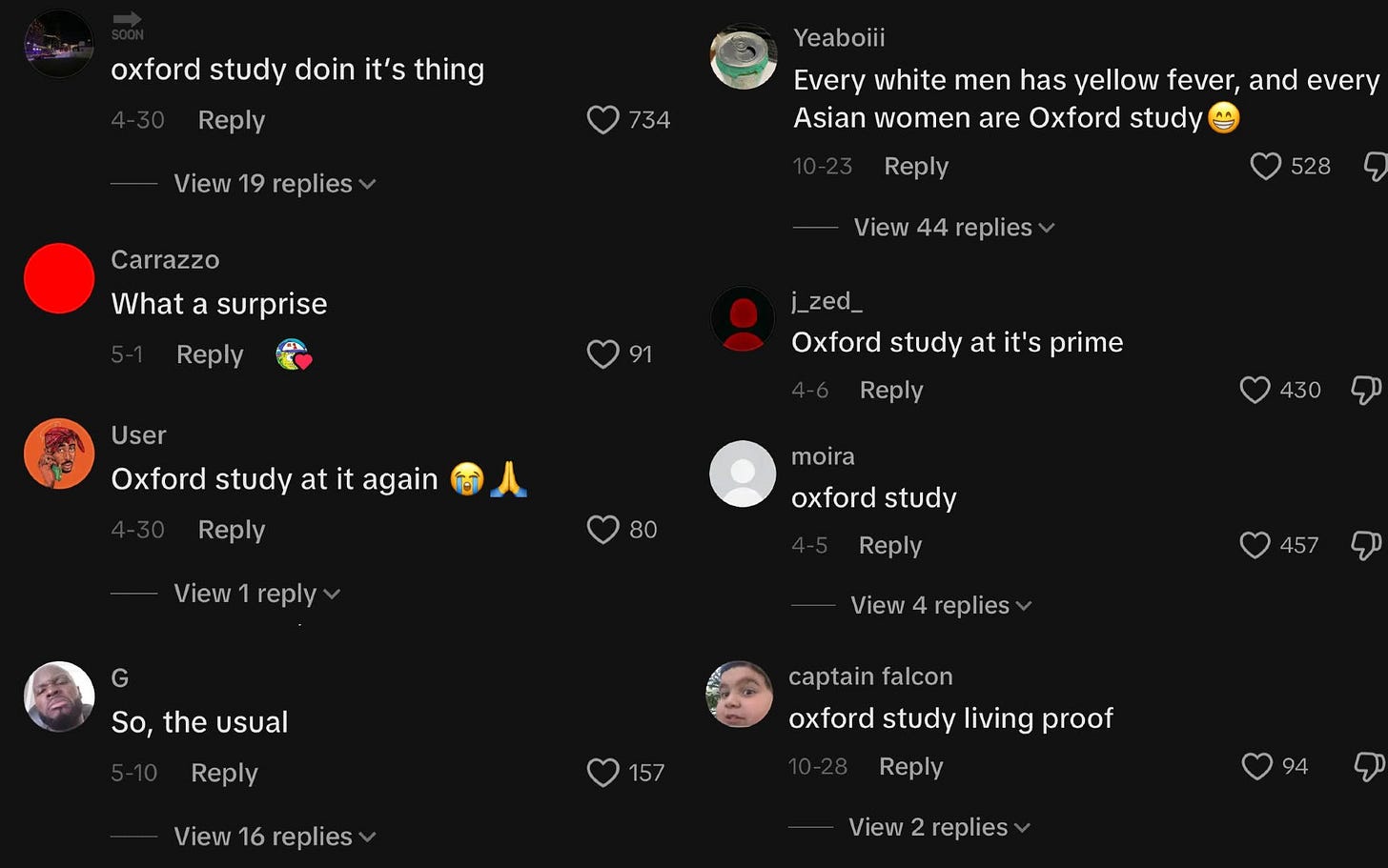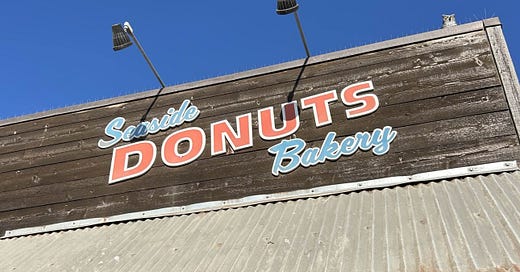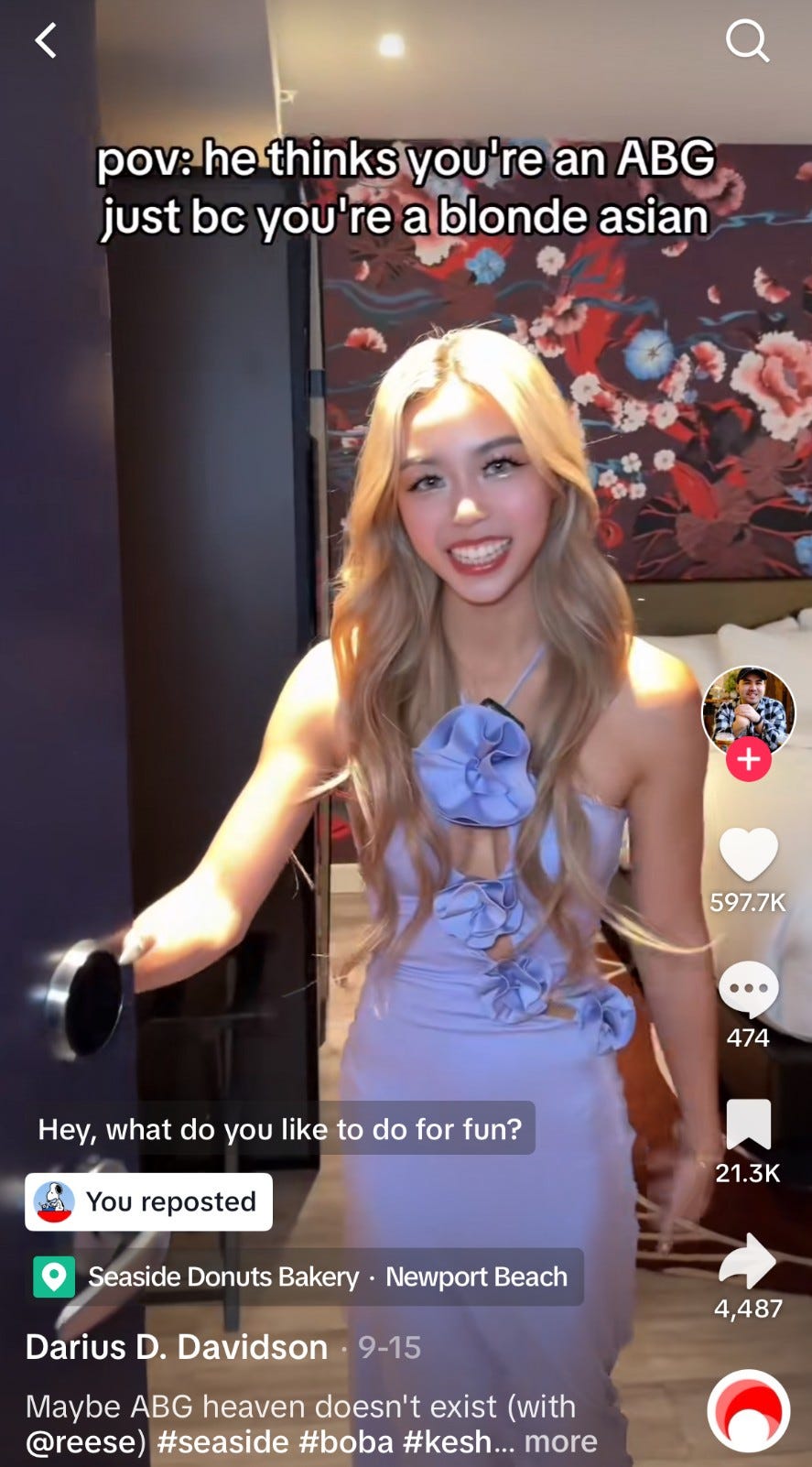From Oxford Studies to the ‘Great Shift,’ What Is This New Asian Identity We’ve Found Ourselves With?
Let me guess, Valorant… Keshi… Seaside Bakery…
Growing up and living in California, especially the Bay Area, it’s hard for me to ever truly feel racially isolated. Which is an experience I imagine very distinctly different to marginalized communities overseas or even in many places in America, as much of a melting pot as it is. That is all to say, I never felt ostracized for being Asian, nor did I feel as though my specific ethnicity or culture was treated as a novelty.
…The latter has struggled to remain true these past few years. Being Vietnamese was something not particularly special to me, especially in comparison to Asian cultures constantly touted as “the standard.” Japan had anime and sushi, South Korea had k-pop and k-dramas. Both preached a specific Eastern standard of thinness and paleness I rarely felt threatened by because, to me, the popularization of those cultures didn’t affect me. Living as Vietnamese-American, I was totally fine with my culture being left alone from the ravages of “weebs” or “koreaboos.” We gave everyone great food and a few TikTok bops and that was that to me.
So it came to my great surprise when, seemingly all of a sudden, Vietnam was cool, mainstream, “socially acceptable.” My whole life, being Vietnamese was, yes, “socially acceptable,” but I chalked that up to the fact that it was the Bay. Yet for some reason, online, Vietnamese representation became abundant, even full of new stereotypes of “Kevin Nguyens” or toxicity, or, god forbid, ABGs.
Perhaps it was just growing up and becoming more aware, but at the same time, I noticed an increase in Asian glamourization. The great rise of Asian Fishing makeup over quarantine, coupled with the slow encroachment of “ABGs” into pop culture have made trends poking fun at stereotypes all the less surprising.
Asian-American girls, especially Southeast Asian girls, experience this full force, with the stereotype of going blonde or getting a blonde balayage being prominent for “ABGs” or, Asian baby girls. ABGs have become the Asian equivalent of “basic white girls” and have similarly been demeaned for following a relatively new stereotype.
(Source: “Blondes or Brunettes?” Colorism Through Hair, by…. me!!, which I can’t believe I get to say haha)
The stereotypes of ABGs (a very much Californian phenomenon, both historically and now) has even led to a trend compiling all it takes to be an ABG or ABB (Asian Baby Boy). Videos depict Asian-Americans asking each other what they like to do for fun, often sarcastically coming to the same interests like raving… Korean barbeque… Valorant…, employing the same, knowing tone.
Even places like Seaside Donuts Bakery, a Cambodian-owned bakery in Newport Beach, California, have become essentially commodified as part of the ABG image. It’s hard to encounter a video about ABGs or ABBs without a name drop of the now infamous bakery. An Essentials hoodie, frequent outings for boba, and shopping at Uniqlo are integral to this new Asian-American persona.

Additionally, the “oxford study” has risen as another aspect of Asian-American identity. Far from an actual study conducted by Oxford University, the term “oxford study” started as a wave of people asking to investigate the “phenomenon” of Asian women being romantically involved with White men. Incessantly, Asian women showing their white partners for even just a moment, are bombarded with comments such as “another oxford study, so surprising.”

Steffi Cao, culture reporter, states for The Guardian:
In most cases, the use of “Oxford study” takes on a ugly tone. Commenters use it to signal a rabid interest in the personal lives of Asian women, informed by entrenched stereotypes around race and gender. They cite the study as a shorthand to criticize the romantic and sexual choices of Asian women in interracial relationships. Many of these commenters are men, often Asian men, and they want to make Asian women the butt of their bad joke.
I will admit to the fact that I participate in many of these stereotypes, I drink boba, listen to artists like keshi, NIKI, and ILLENIUM, and I have visited Seaside Donuts within the past month. But that part isn’t the problem. Even poking fun at the stereotypes is ultimately a legitimization.
The Asian-American identity has become three things:
Extremely California centralized. Particularly Southern California with its “SoCal Asians” popularized by former-college-admissions-TikToker-turned-ABB-influencer Eric Ou. Rarely do you ever see an Asian-American from Indianapolis talk about being an “ABG.”
Popularized… in a demeaning way.
Though the popularization, especially of the stereotypes, is primarily within the Asian-American community itself, all of these aforementioned attributes have become a massive joke.
And though ABGs/ABBs are largely associated with Southeast Asians (and also like a little bit East Asians, for virtue of proximity, I suppose), fret not, for South Asians are now facing a similar shift in perception. One may even call it, a Great Shift.
Purportedly, prior to 2016, darkskin Black men, in comparison to their lightskin counterparts, had more difficulty being perceived as attractive. Then, as this Reddit post1 professes, though “light skins [have] the most pull for sum reason ... randomly it shifted to like darkskins and dreadheads etc.” And, while it may sound far fetched, this “Great Shift” actually has statistical merit. A study reported on by SBS News Australia states that:
In 1990, lighter skins easily dominated the Most Beautiful list, making up 88 per cent of the celebrities. By 2017, the lighter-skinned stars accounted for 70.4 per cent of the total and darker-skinned individuals 29.6 per cent.
This shift is now being applied to South Asians, particularly Indian girls. Of course, Indian girls and darkskin Black guys have been fine forever (hi Cece from New Girl, hi Giveon), but, as much as we can attribute these so-called “Great Shifts” to cultural expansion, I can’t help but feel as though it blatantly rings of external validation.
Simran Pasricha writes in her article The Great Indian Shift Trend On TikTok Is Not A Compliment, It’s Just White Approval:
[Kate Sharma in Bridgerton being celebrated] was proof that we could be seen as beautiful in mainstream narratives. But why do we need proof to believe in our own beauty?
We deserve more than being part of someone else’s fleeting fascination; we deserve to be seen and appreciated for who we truly are — beautiful, complex individuals with stories that go far beyond any trend.
In these times where appreciation can quickly turn into objectification or erasure, if you still think it’s a compliment to comment “the great shift” on a video of an Indian baddie, kindly fuck right off, please and thank you.
With constant, and known Asian infantilization and commodification rampant (don’t get me started on yellow fever or this piece will go on for ages), are we really going to continue mistaking fetishization and improper popularization for genuine understanding and acceptance? Even light-hearted stereotypes within a community, such as ABGs/ABBs, becoming such a large-scale joke only serves to uphold Western ideals and exotic “curiosity.” White validation runs deep even when they are nowhere to be found.
Thanks so much for reading! I have been meaning to post this foreverrrrr, and, in a way, I’m a little glad the “Great Shift” popped up right at the perfect time to dissect it.
Be sure to subscribe for free as it’s the best way to directly support me and my work. Also share with your favorite ABG, New Girl viewer, and/or upside down pineapple cake enjoyer.
As always, here’s a playlist for the article!
no way is this what I do, I know it’s a serious topic, but good lord was I laughing so hard stumbling across this post






